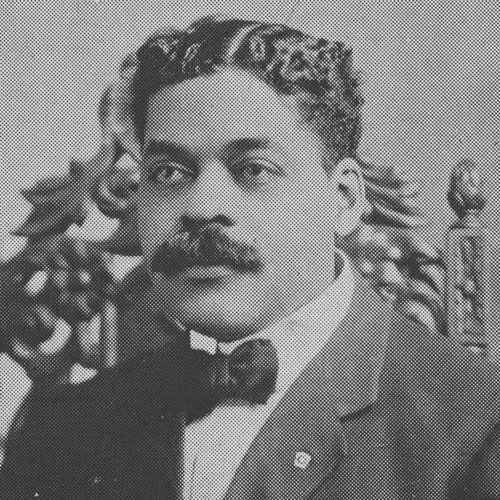
Table of Contents
Who Was Arturo Alfonso Schomburg?
Arturo Alfonso Schomburg was a distinguished historian, writer, researcher, and curator whose legacy lies in his monumental contributions to the preservation and promotion of Black history and the African diaspora. He amassed an extensive personal collection of over 10,000 artifacts related to these subjects, which eventually formed the foundation of the Schomburg Center for Research in Black Culture, now part of the New York Public Library. Schomburg was also an influential figure during the Harlem Renaissance and a passionate advocate for Puerto Rican independence.
Early Life
Born on January 24, 1874, in Santurce (then known as Cangrejos), San Juan, Puerto Rico, Schomburg was the son of Maria Josefa, a free Black woman from St. Croix, and Carlos Federico Schomburg, a Puerto Rican of German descent. His upbringing in Puerto Rico was pivotal; he was deeply impacted by a teacher’s assertion that there were no significant accomplishments in Black history, a statement that ignited his lifelong quest to collect and document the achievements of people of African descent worldwide.
Schomburg’s education included attendance at San Juan’s Instituto Popular, where he furthered his interest in Negro literature at St. Thomas College in the Danish Virgin Islands.
Life in New York City
At the age of 17, Schomburg relocated to New York City in 1891. He undertook various roles, including elevator operator, bellhop, and printer, while pursuing his studies at Manhattan Central High School in the evenings. In 1892, he was initiated into the Freemasons.
During this period, Schomburg was actively engaged in advocating for independence for Puerto Rico and Cuba. He co-founded Las Dos Antilles, a political club dedicated to this cause. However, following the Spanish-American War in 1898 and the subsequent cession of Puerto Rico to the United States, the momentum for Puerto Rican independence diminished, leading to the dissolution of his political club.
Schomburg’s Collection
Schomburg devoted a significant portion of his life to curating an extensive collection of books, documents, pamphlets, and artwork related to the African diaspora in the Americas and Europe. His mission was clear: to preserve the historical records of Black achievements, foster racial consciousness and pride, inspire artists, and provide valuable information about the contributions of people of African descent.
His collecting efforts were extensive; he frequented rare book stores, corresponded with dealers in Europe, and reached out to individuals across the United States, even encouraging contacts in Detroit to search for historical artifacts in Black neighborhoods. Notably, he remarked, “You are bound to pick up rarities like letters from Frederick Douglass.”
Schomburg’s professional tenure at the Bankers Trust Company from 1906 to 1929 enabled him to pursue his collecting interests. As the supervisor of the Caribbean and Latin American Mail Section, he leveraged his multilingual abilities in English, Spanish, and French to facilitate his correspondence regarding historical artifacts.
By 1926, Schomburg had successfully amassed over 10,000 items showcasing the rich tapestry of Black and African achievements. His collection included slave narratives, works by notable figures such as Phillis Wheatley and Toussaint L’Ouverture, as well as music composed by Chevalier de Saint-Georges. Additionally, Schomburg engaged in research on the African roots of prominent individuals, including John James Audubon and Ludwig van Beethoven.
During the Harlem Renaissance, his collection became a vital resource for writers and artists, including Zora Neale Hurston and others who drew inspiration from his extensive archives.
Writing and Scholarship
In 1911, Arthur Schomburg co-founded the Negro Society for Historical Research, marking a significant milestone in the study of Black history. He later joined the American Negro Academy in 1914 and served as its president from 1920 to 1928, demonstrating his commitment to advancing the field of African American scholarship.
Schomburg was prolific in sharing his research through contributions to prominent Black periodicals, including The Crisis, Opportunity, and The New York Amsterdam News. One of his notable works, the essay titled “The Negro Digs Up His Past,” was published in Survey Graphic Magazine in 1925 and subsequently included in Alain Locke’s influential anthology, The New Negro, that same year.
Library and Curation
In 1926, the Carnegie Corporation awarded a grant of $10,000 to purchase Schomburg’s extensive collection, which was then donated to the New York Public Library. This financial support enabled Schomburg to travel to Europe, where he furthered his research and continued to expand his collection.
In 1931, he took on the role of curator for the Negro Collection at Fisk University in Nashville, significantly enhancing the university’s holdings. However, he returned to New York City in 1932, where he resumed his position as curator of the collection he had previously donated to the New York Public Library, which was housed at its 135th Street branch in Harlem.
Death and Legacy
Arthur Schomburg passed away in Brooklyn on June 10, 1938, at the age of 64, and was laid to rest in Cypress Hills Cemetery.
In recognition of his invaluable contributions, the research library housing Schomburg’s collection was renamed the Schomburg Center for Research in Black Culture in 1972. The center moved to a new building at 135th Street in 1980, further establishing itself as a vital institution for the study of African American culture.
Today, Schomburg’s original materials have laid the groundwork for a collection that has grown to encompass over 10 million items. These resources are accessible to both scholars and the general public, along with a variety of exhibitions, lectures, and discussions organized by the Schomburg Center.
Marriages and Children
Arthur Schomburg married Elizabeth Hatcher in 1895, and the couple had three children: Máximo Gómez, Arturo Alfonso Jr., and Kingsley Guarionex, before her untimely death in 1900.
In 1902, he married Elizabeth Morrow Taylor, with whom he had two additional sons: Reginald Stanfield and Nathaniel José. Schomburg’s third wife, Elizabeth Green, married him in 1914, and they had three children together: Fernando Alfonso, Dolores María, and Carlos Plácido.
